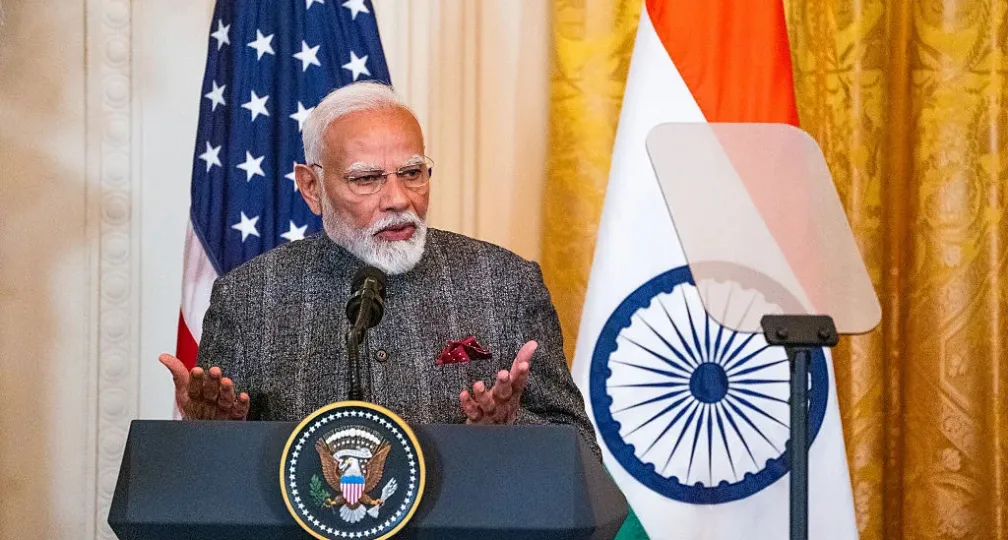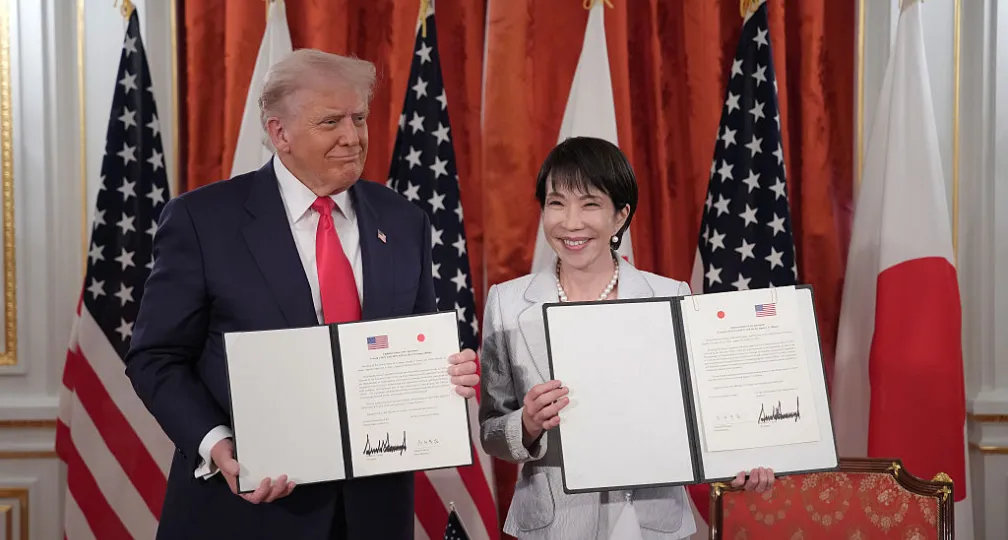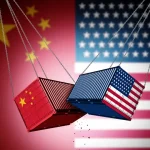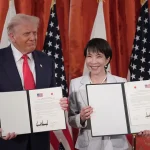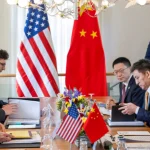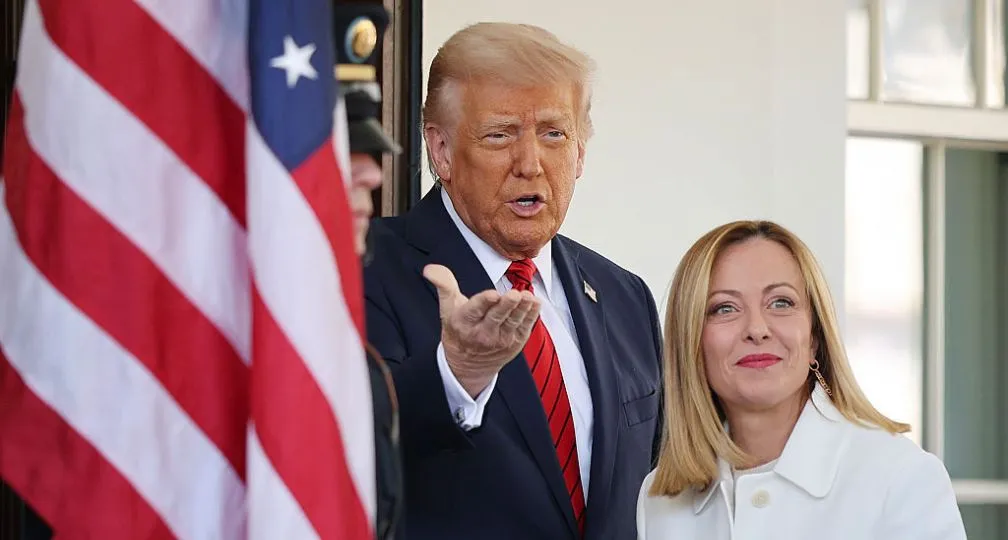The Real Significance of Trump’s Asia Trip
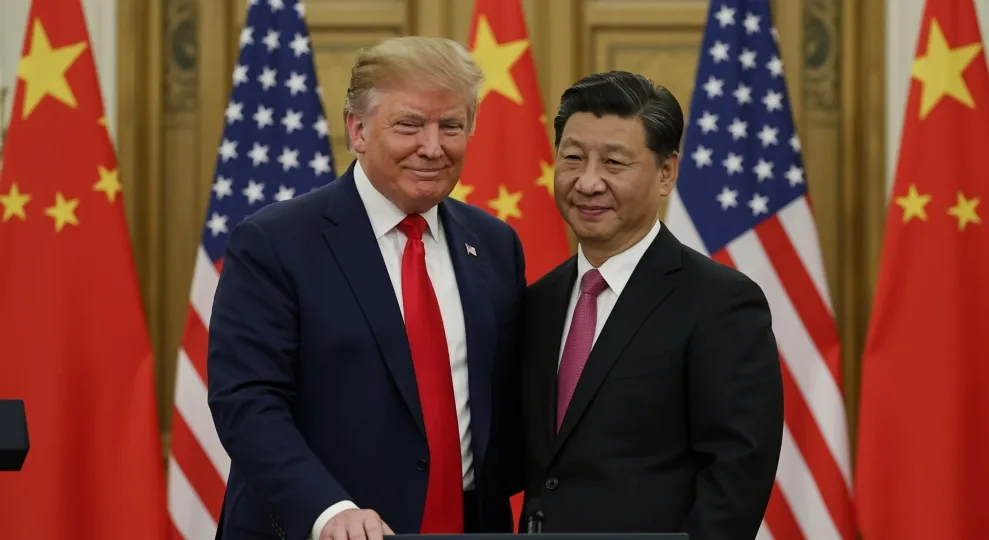
The latest regulatory developments on economic security & geoeconomics
By Paul Nadeau, Visiting Research Fellow, Institute of Geoeconomics (IOG)
Trump, Xi Press “Pause” on Escalating Trade Tensions: China’s Xi Jinping and Donald Trump of the United States reached an accord on October 30 that seeks to reduce trade tensions between the two countries for at least one year. Under the agreement, China’s government agreed to “effectively eliminate” its current and proposed export controls on rare earths and other critical minerals while reducing the flow of the precursor chemicals necessary for the production of fentanyl, and agreed to reverse efforts by stated-backed semiconductor company Wingtech Technology to block exports of key components to its Dutch subsidiary Nexperia. The United States meanwhile suspended the collection of port fees on Chinese-made ships and halted its Section 301 investigation into unfair practices in China’s shipbuilding sector. Additionally, the U.S. Commerce Department’s Bureau of Industry & Security’s (BIS) “Affiliates Rule” or “50 Percent Rule” would be suspended for one year effective November 10.
G7 Critical Minerals Alliance Kicks Off: The G7’s Critical Minerals Production Alliance was officially launched on October 31 following its announcement at the June G7 summit in Kananaskis, Alberta, Canada. The program is intended to dent China’s near-monopoly on rare earths production by mobilizing public and private capital to fast-track production of graphite, rare earths, and scandium. 25 projects have been shortlisted totaling $4.6 billion.
OFAC Sanctions DPRK Funding Schemes: On November 4, the U.S. Treasury Department’s Office of Foreign Assets Control (OFAC) sanctioned eight individuals and two entities for their role in laundering funds derived from a variety of illicit Democratic People’s Republic of Korea (DPRK) schemes, including cybercrime and information technology (IT) worker fraud.
SCOTUS Hears Arguments on IEEPA: The U.S. Supreme Court heard oral arguments related to lawsuits against Donald Trump’s tariffs implemented under the International Economic Emergency Powers Act, which include the “reciprocal” tariffs announced on April 2 and the fentanyl tariffs against Canada and Mexico. The hearing provided the justices an opportunity to question lawyers for each side about the case, and while the general tone of the questioning appeared to be skeptical of the Trump administration’s argument that it could impose tariffs under the IEEPA, no decision was made by the Court during the hearing.
OFAC Sanctions Hezbollah Funding Network: On November 6, the U.S. Treasury Department’s Office of Foreign Assets Control (OFAC) sanctioned individuals who funneled “millions of dollars” from Iran to Hezbollah through exchange houses that take advantage of Lebanon’s cash-based financial sector pursuant to Executive Order (E.O.) 13224 which targets “terrorists and their supporters”.
Greece, United States Sign Economic Security Declaration: The United States signed an economic security declaration with Greece on November 7. Apparently the first of its kind, the economic security declaration includes language on secure supply chains, protecting sensitive technologies, addressing overcapacity, and more toward a “comprehensive economic partnership for peace, security and prosperity based on shared interests and a shared commitment to a better future” but lacks actionable provisions.
FCC Closes Loophole on Tramsmitters: On October 28, the Federal Communications Commission (FCC) voted to close loopholes in the modular transmitter loophole, meaning that certain insecure Huawei, Hikvision, or other Covered List modular transmitters could no longer be included as components within otherwise lawful or authorized devices. The result of the vote will also establish a process for the FCC to prohibit the continued importation, marketing, and sale of previously authorized devices that the agency subsequently placed on the Covered List based on national security concerns.
Analysis: The Real Significance of Trump’s Asia Trip
By Andrew Capistrano, Visiting Research Fellow, IOG
President Trump’s late October trip to Asia was dominated by headlines about the one-year pause in US-China tariff escalation and rare-earth export controls that seemed to stabilize markets and ease bilateral tensions. Yet since this high-profile détente effectively returns the US-China negotiations to the status quo of the summer, characterized by trade meetings in Europe and maneuvering for greater strategic autonomy, it may actually prove to be the trip’s least consequential outcome. More low profile, but likely more significant, were signs of what could be an emerging economic security architecture in Asia — and signals that the Trump administration may be shifting from trade confrontation with allies toward a more cooperative posture.
This is not to say that the three key results of the Trump-Xi meeting on the sidelines of the APEC summit were insignificant. First, the US agreed to postpone for one year its 100% tariff threat and the “affiliates rule” (which expands export controls on foreign firms that are at least 50% owned by one or more listed parties, such as on the Entity List) in exchange for China’s postponement of its rare-earth export control regime for the same period. Second, the US reduced its 20% fentanyl tariff on China to the original 10% in exchange for Chinese commitments to crack down on domestic producers of fentanyl precursors, and to resume soybean purchases. Third, both sides lifted reciprocal port fees. Taiwan and sales of the most advanced US semiconductors were apparently not discussed.
However, this was a modest improvement in comparison to what occurred in the preceding days. Before the Trump-Xi meeting, the US delegation had already introduced greater clarity into the US-Japan and US-Korea trade agreements, as well as signed several new trade deals and frameworks with Malaysia, Cambodia, Thailand, and Vietnam. Together these results have the potential to reshape the region’s geoeconomic landscape far more profoundly than the one-year extension of the US-China trade truce.
The US-Japan and US-Korea agreements negotiated over the summer were similar: both allies received a 15% US tariff rate in exchange for strategic investment commitments ($550 billion from Japan, $350 billion from Korea). But how these vague investment commitments would be implemented remained uncertain. Now there is a greater degree of clarity, with Japanese-proposed projects centering on critical energy infrastructure ($332 billion) and AI infrastructure ($30 billion), among others. With respect to Korea, there had been concerns that annual capital outflows over $20 billion would be impossible for Korean foreign exchange markets to manage. The US-Korea agreement signed during Trump’s visit took that under consideration, splitting the investment fund into $150 billion for US shipbuilding and the remaining $200 billion capped at $20 billion a year.
More interesting from an economic security perspective were the US-Japan and US-Korea Technology Prosperity Deals that build on a similar US-UK deal reached in September. These agreements aim to align regulatory and standards approaches, accelerate research and development, and strengthen economic security among critical US allies in AI, quantum computing, and space. The US and Japan also committed to strengthening and applying comprehensive mechanisms for reviewing inbound investment and addressing risks from outbound investments based on national security, and signed an important critical minerals partnership. When viewed in the context of the $2 billion US-Australia critical minerals agreement signed just before Trump left for Asia, a common regional approach to offset US and allied dependence on Chinese mineral processing is coming into view.
Although there was no US-Japan-Korea trilateral heads-of-state meeting on the APEC sidelines, in a trilateral foreign ministers’ meeting a new platform to advance energy, supply chain, and critical technology cooperation was emphasized. Given an unexpectedly warm meeting between Japanese Prime Minister Takaichi and Korean President Lee, there is a possibility that such an “economic security trilateral” could be a coordination point to strengthen allied ties. The important point is that by linking industrial capacity, supply chains, and investment security, the three allies are primed to construct a framework that operationalizes Trump’s signature approach of integrating economic and national security objectives.
Yet even this trilateral may ultimately be just one part of a broader US-designed economic security approach to the region, where tariff leverage is applied to reorient supply chains and gain influence in Southeast Asia. Indeed, the most transformative — but least discussed — outcome of Trump’s Asia trip was the set of trade deals with Malaysia and Cambodia, and trade frameworks with Thailand and Vietnam. Taken together, these agreements mark the most explicit US attempt in decades to align Southeast Asia’s trade policy with American strategic priorities.
At their core, the Southeast Asian deals address three issues: preventing transshipment of Chinese goods through third countries to exploit lower tariffs and minimal rules-of-origin enforcement; protecting against “unfair practices” by Chinese production in third countries; and securing critical mineral and strategic supply chains vital to US industry.
First, the Trump administration has made it clear that they view the failure to address transshipment as a critical weakness of Trump’s first-term US-China “Phase One” trade deal. To correct this, the Malaysia and Cambodia deals give the US the right to impose future rules of origin that limit Chinese content in goods assembled in those countries — an attempt to ensure that exports are genuinely local, not repackaged Chinese products. The agreements also establish a loose but meaningful collective action mechanism: if the US imposes a trade or non-tariff barrier against a “third party” (an implicit reference to China), Malaysia and Cambodia are obliged either to adopt measures of “equivalent restrictive effect” or to negotiate a mutually acceptable timeline for doing so. US trade frameworks with Thailand and Vietnam contain similar but more unspecified language.
Second, beyond trade measures, the four deals/frameworks include commitments to protect the US market from “unfair practices” by “third party”-owned firms operating in their countries and to address duty evasion. This could potentially pave the way for voluntary export restraints or coordinated restrictions on Chinese-affiliated production. Moreover, the agreements also extend cooperation into export controls, sanctions enforcement, and investment screening, with Malaysia and Cambodia pledging to align their domestic systems more closely with US standards — essentially creating their own versions of CFIUS. In return, the US appears willing to offer some flexibility, possibly including easing export restrictions for partners that adopt parallel regimes on dual-use technologies. In the text of the agreements, this is called “economic security alignment”.
Third, the agreements recognize the importance of critical minerals and strategic sectors to US economic security. Given Malaysia’s large reserves, such language is strongest in its trade deal with the US, indicating it could become a foundation for new allied supply chains over the next year. Malaysia agreed to facilitate US investment in critical minerals and rare earths, refrain from bans or quotas on exports to the US, extend operating licenses, and ensure the sale of rare-earth magnets to US firms. The US deal with Cambodia and frameworks with Thailand and Vietnam focus more on facilitating US investment in energy, telecommunications, and supply chain resilience.
But what makes the “trade deals” truly significant is that they are not actually conventional trade agreements. Rather, they fuse market access with implicit national security commitments. It is striking that the US-Malaysia and US-Cambodia deals both include a termination clause, enabling the US to revoke preferential treatment if either enters into any new bilateral free trade deal or preferential economic agreement that jeopardizes essential US interests or “poses a material threat to economic or national security”. This even goes further than the termination clause included in the 2020 US-Mexico-Canada Agreement (USMCA), and adds a layer of leverage that links market access to strategic alignment.
These clauses are not in the US-Thailand or US-Vietnam frameworks — at least not yet. A final point is that those frameworks so closely mirror the US deals with Malaysia and Cambodia, there are hints that a “convergence factor” could be at play, not unlike the dynamic that led to the Trump administration’s deals with its advanced-economy allies. Just as the US-Japan deal earlier this year incentivized the EU and Korea to adopt similar 15% tariff arrangements in exchange for strategic investment commitments, the Malaysia deal could become a focal point for ASEAN countries seeking comparable access. Already Vietnam is negotiating to reduce its proposed 20% tariff to the 19% regional standard given to Malaysia, Cambodia, and Thailand (as well as Indonesia and the Philippines in earlier deals).
The “convergence factor” hints at a broader model for future US engagement with the region: trading export-led growth opportunities for deeper economic security coordination. In this sense, they represent more than bilateral trade deals, potentially anchoring Southeast Asia into a wider US-led economic security network that includes key allies like Japan and Korea. If implemented as written, these agreements could knit together a US-aligned bloc where Japan and Korea provide the industrial backbone of technology, shipbuilding, energy, and defense, while Southeast Asia would provide critical minerals, manufacturing, and emerging markets.
Still, there are at least two reasons for caution before proclaiming Trump’s Asia trip a great success. First, follow-through is not guaranteed. The US has a long history of announcing ambitious industrial strategies only to lose focus once immediate political objectives are achieved. Building rare-earth processing capacity, for instance, requires sustained investment, environmental regulation, and political stability, none of which can be assumed in the current US policy environment. There is also the issue of Trump’s dissatisfaction leading to another round of disruption that undermines the positive deliverables of his Asia trip.
Second, ASEAN states remain balancers, not joiners, and ASEAN as a whole continues to hedge. Only days after Trump’s Asia trip, ASEAN and China concluded an upgraded version of their free trade agreement, reaffirming China’s centrality in regional trade. All ASEAN economies are also part of the Regional Comprehensive Economic Partnership (RCEP), which structurally orients them toward China’s market. In the end, ASEAN’s economic strategy is not to choose sides but to maintain access to both US and Chinese systems. For them, US engagement is a welcome counterbalance, but not a substitute for China’s regional gravitational pull.
If the US can maintain momentum, it may succeed in institutionalizing this framework, transforming ad hoc trade diplomacy into a coherent Indo-Pacific economic order. But this will require consistency — something past US administrations have struggled to sustain. For Southeast Asian partners, the coming year will be a test: whether Trump’s promises of partnership translate into tangible investment and balanced cooperation. For the US, the challenge is to prove that transforming trade policy into a geopolitical tool can deliver win-win benefits, demonstrating that “economic security is national security” is not just a slogan, but a strategy with staying power.
(Photo Credit: Shutterstock)
Disclaimer: The views expressed in this IOG Economic Intelligence Report do not necessarily reflect those of the API, the Institute of Geoeconomics (IOG) or any other organizations to which the author belongs.
API/IOG English Newsletter
Edited by Paul Nadeau, the newsletter will monthly keep up to date on geoeconomic agenda, IOG Intelligencce report, geoeconomics briefings, IOG geoeconomic insights, new publications, events, research activities, media coverage, and more.



Visiting Research Fellow
Andrew Capistrano is Director of Research at PTB Global Advisors, a Washington DC-based geopolitical risk consulting firm. Specializing in economic competition between the US/EU and China, he analyzes how trade, national security, and industrial policies impact markets, and his firm’s clients include Japanese corporations and government agencies. He previously worked in Tokyo at the US Embassy’s American Center Japan and as a research associate at the Rebuild Japan Initiative Foundation / Asia-Pacific Initiative. Dr Capistrano holds a BA from the University of California, Berkeley; an MA in political science (international relations and political economy) from Waseda University; and a PhD in international history from the London School of Economics. His academic work focuses on the diplomatic history of East Asia from the mid-19th to the mid-20th centuries, applying game-theoretic concepts to show how China's economic treaties with the foreign powers created unique bargaining dynamics and cooperation problems. During his doctoral studies he was a research student affiliate at the Suntory and Toyota International Centres for Economics and Related Disciplines (STICERD) in London.
View Profile
Visiting Research Fellow
Paul Nadeau is an adjunct assistant professor at Temple University's Japan campus, co-founder & editor of Tokyo Review, and an adjunct fellow with the Scholl Chair in International Business at the Center for Strategic and International Studies (CSIS). He was previously a private secretary with the Japanese Diet and as a member of the foreign affairs and trade staff of Senator Olympia Snowe. He holds a B.A. from the George Washington University, an M.A. in law and diplomacy from the Fletcher School at Tufts University, and a PhD from the University of Tokyo's Graduate School of Public Policy. His research focuses on the intersection of domestic and international politics, with specific focuses on political partisanship and international trade policy. His commentary has appeared on BBC News, New York Times, Nikkei Asian Review, Japan Times, and more.
View Profile US-China Misperceptions in the Race for Strategic Autonomy2025.10.17
US-China Misperceptions in the Race for Strategic Autonomy2025.10.17 Can Takaichi Build on a Successful Summit?2025.10.31
Can Takaichi Build on a Successful Summit?2025.10.31 Event Report: Nuclear Weapons, Eighty Years After the War and the Atomic Bombings2025.09.25
Event Report: Nuclear Weapons, Eighty Years After the War and the Atomic Bombings2025.09.25 Trump’s Tariff Policy through a Geoeconomic Perspective2025.10.10
Trump’s Tariff Policy through a Geoeconomic Perspective2025.10.10 Navigating Uncertainty: India’s Quiet Strategic Moves2025.10.15
Navigating Uncertainty: India’s Quiet Strategic Moves2025.10.15




